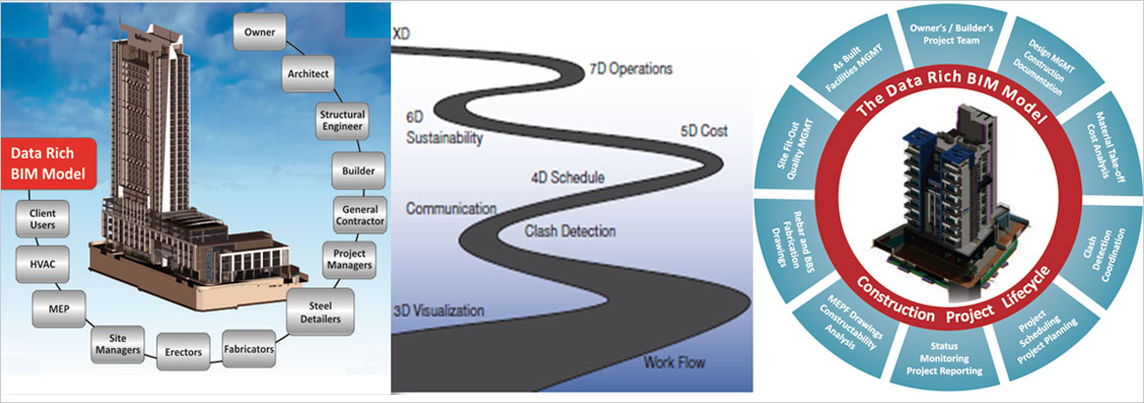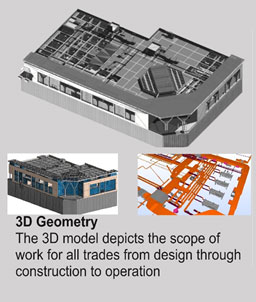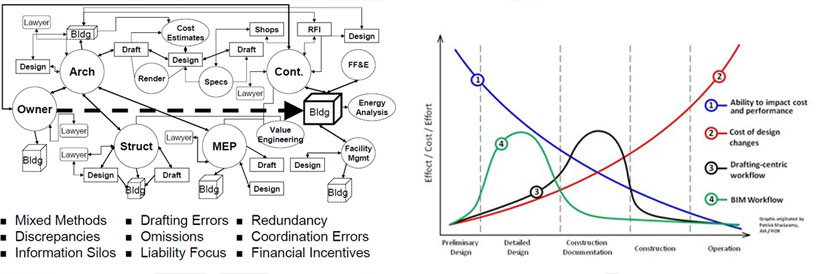- What is BIM |
- Why BIM |
- 4D |
- 5D |
- 6D |
- BIM Benefits - ROI
- contact@steeltechengg.com
- 022 - 27580778 / 41230778


Building Information Modeling (BIM) is a new approach to building project delivery that uses data to create an information-rich model of a facility to improve the design, construction, and operation of the facility. Successfully implemented projects show significant benefits, including improved design quality, improved field productivity, cost predictability, reduced conflicts and associated changes, and reduced construction costs and duration.
Leveraging the data from multiple sources used to create the virtual BIM model we can see the design and analyze how all of the elements work together. By adding the third dimension (3D) to the traditional flat (2D) drawings we are able to avoid potential clashes well before construction begins and materials have been ordered resulting in significant savings. Beyond 3D BIM adds intelligence to the model by making information about each element available to the users. For example using GPS data a building is anchored to a specific location in the world, this in turn provides us with long term weather and solar data that allows us to analyze the annual energy use of the building and run "what if" scenarios exploring building form, orientation, envelope, shading, etc. Adding the dimension of time (4D) the BIM model can further analyze the construction processes critical to transforming the design into reality.
As more and more relevant data is added to the BIM model it can be used for a variety of other value added processes such as sustainability, costing, procurement, off-site or modular construction, safety, owner space management and tracking, operations and maintenance, mission critical and disaster planning to name but a few. Ultimately, however, BIM is not about technology or processes, it is about people and how the knowledge and wisdom of people can be brought together into a collaborative process to deliver a fully integrated project that meets all goals and objectives aspired to in from the beginning.
